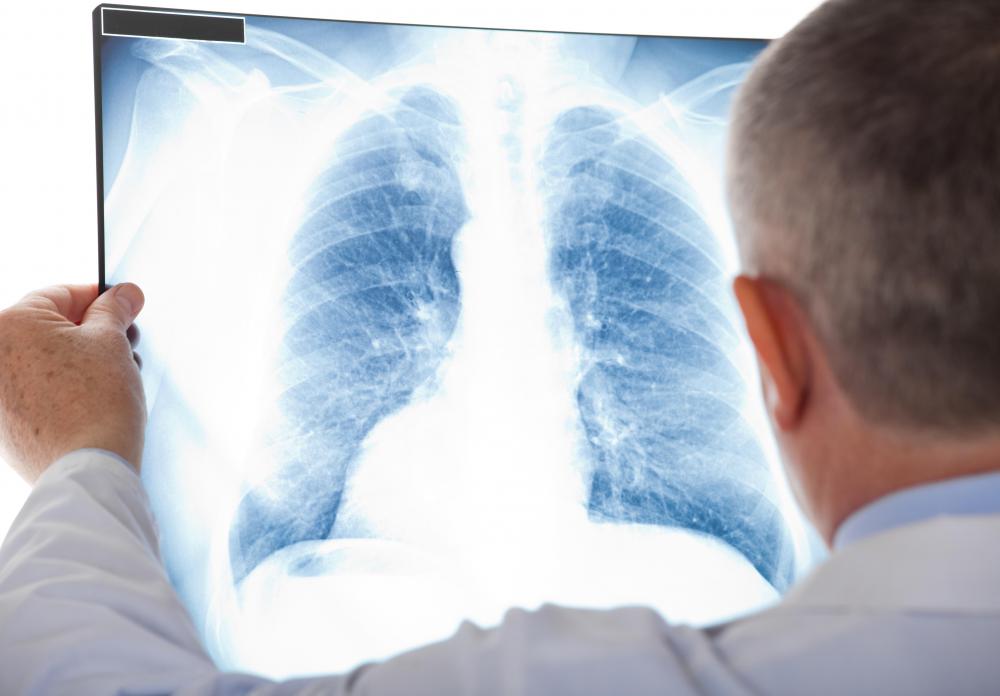At TheHealthBoard, we're committed to delivering accurate, trustworthy information. Our expert-authored content is rigorously fact-checked and sourced from credible authorities. Discover how we uphold the highest standards in providing you with reliable knowledge.
What are the Bronchioles?
The bronchioles are part of the airway passages in the lungs. They are located at the end of the bronchi, the larger, branching airway passages in the lungs, and terminate in the alveoli, tiny circular sacs where oxygen is exchanged with carbon dioxide in the blood. These passageways are distinguished from the bronchi in that they do not contain cartilage or glands. They are responsible for controlling air distribution and airflow resistance in the lungs.
The lungs and their structures are part of the respiratory system, which controls breathing and also includes the upper respiratory passages, the nose, throat, and sinuses, and the pharynx and trachea. Air is drawn into the lungs through the upper respiratory passages until it reaches the alveoli, where the blood is oxygenated. Deoxygenated blood transfers its carbon dioxide into the alveoli, and the carbon dioxide is breathed out through the respiratory passages. This process helps the blood carry oxygen throughout the body, powering the body's metabolism.

The bronchial network, like most of the respiratory passages, contains cilia, small fingerlike cell projections, on their inner surface to help move air through the system. Bronchioles are branching, beginning with the primary bronchioles, which branch into the smaller and more numerous terminal bronchioles, which in turn divide into the respiratory bronchioles. Each terminal one contains Clara cells, which secrete a protein compound called surfactant that serves to lubricate the passageways, maintaining airflow, and to detoxify harmful substances inhaled into the lungs.

Bronchial dysfunction can be the cause of life-threatening disorders. In bronchospasm, the bronchial passages constrict and become narrower, impeding oxygen absorption in the blood. It's a symptom of asthma, bronchitis, flu, and respiratory tract infections, as well as anaplhylactic shock caused by allergens. Bronchospasms can also result as a side-effect of certain drugs, including beta-blockers and pilocarpine. They can cause coughing, breathlessness, and hypoxia, or a lack of oxygen in the body.

An inflammation of the bronchioles is called bronchiolitis. It is typically a symptom of viral infection, but in one rare and serious form, bronchiolitis obliterans, the passageways become obstructed by fibrous connective tissue. Most bronchial disorders can be treated by oxygen therapy or bronchodilation, or by treating the underlying cause of the disease. Bronchodilation uses either medication or mechanical manipulation to widen the airways in the lungs. Bronchiolitis obliterans, however, is irreversible, and may require lung transplant in severe cases.
AS FEATURED ON:
AS FEATURED ON:















Discussion Comments
Wow, bronchiolitis sounds like it can be pretty dangerous! I can't believe it can lead to a lung transplant. I'm happy to hear that it's a rare form of bronchiolitis that leads to something so drastic. We wouldn't want people needing lung transplants all over the place!
Those little bronchioles sure are an important part of breathing!
Thank you for explaining what it is that the bronchioles do. I'm really interested in how the human body works, but I don't remember learning much about bronchioles. I wish I would have paid more attention in school!
I knew that bronchitis has more to do with the bronchi, but I thought that bronchiolitis was just another name for bronchitis! Now I know the difference!
Post your comments